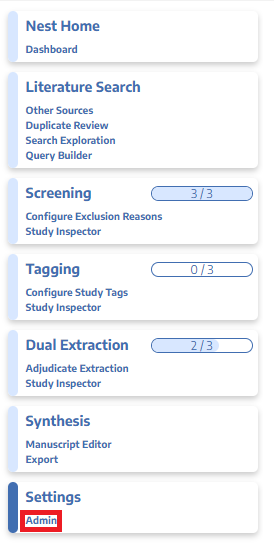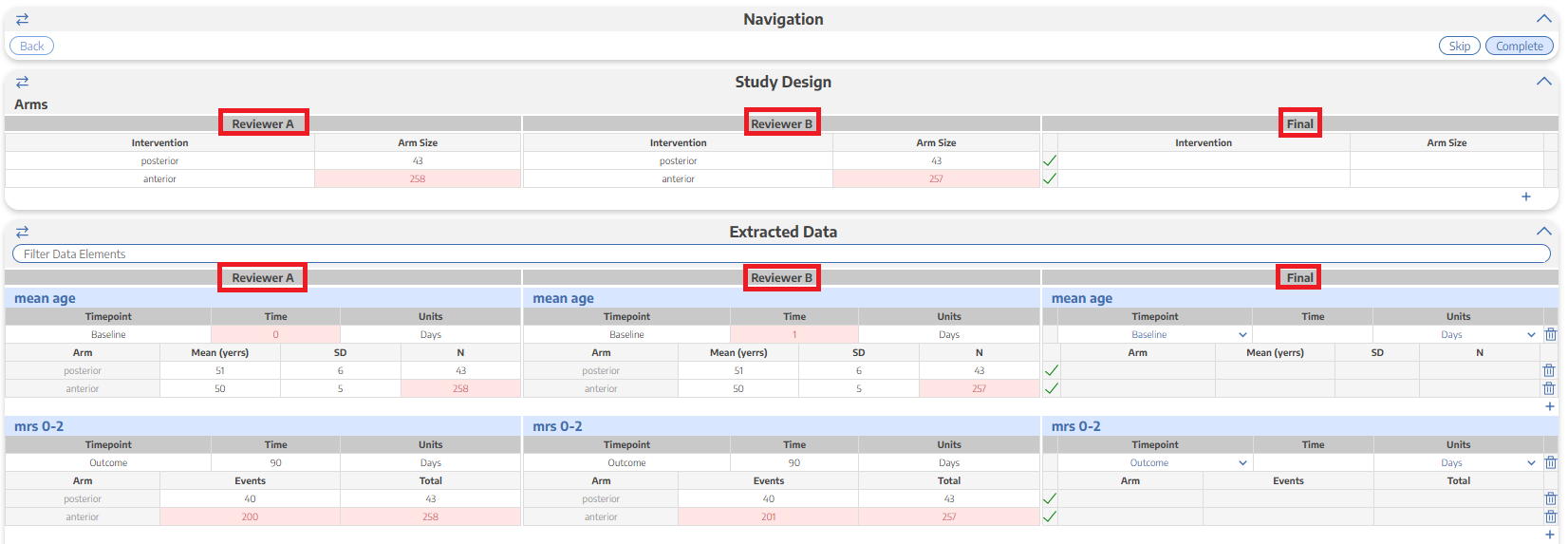AutoLit® User Guide
Examining Results in Synthesis
Administrative Tools
Support and FAQs
Best Nest Building Practices
SLR Basics: How to Perform Systematic Review
NMA Basics: How to Perform a Meta-Analysis
Best Practices for Writing a Publishable Manuscript

 To configure dual extraction, go to the Admin page under settings and then scroll to the Extraction section. Then, toggle to dual extraction to turn this feature on.
To configure dual extraction, go to the Admin page under settings and then scroll to the Extraction section. Then, toggle to dual extraction to turn this feature on. 



